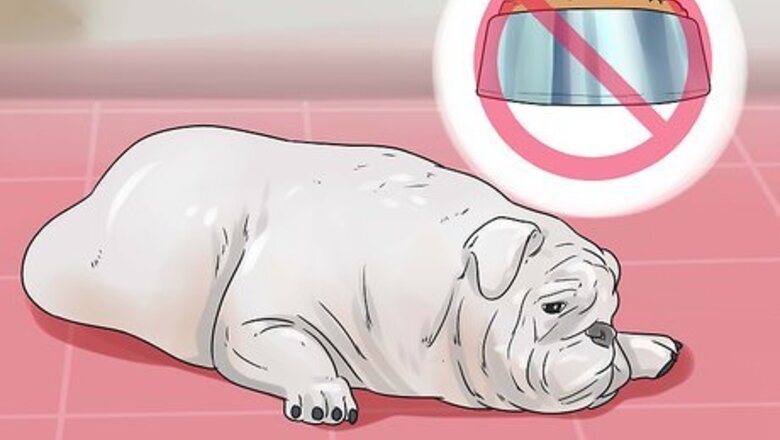
views
Treating Your Dog's Diarrhea Through Diet
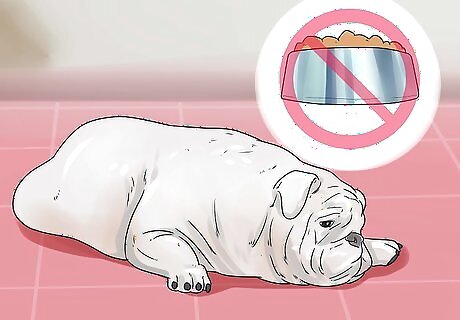
Put the dog on a 12 to 24-hour fast. The presence of food in the gut causes contractions of the bowel wall to push food along. But if the dog has diarrhea, these contractions can be over-enthusiastic and push food through too quickly in the form of diarrhea. The answer is to withhold food for 12 - 24 hours to let the over-sensitized bowel wall calm down and act normally.
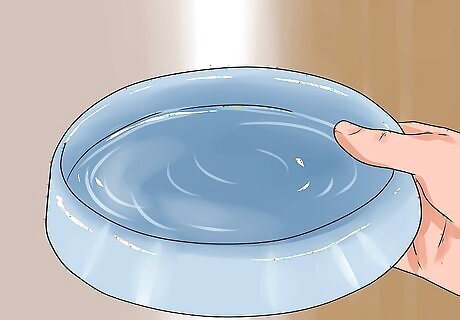
Provide fresh drinking water. During this period of fasting, let the dog have access to clean, fresh drinking water. Monitor the water bowl to make sure it is going down (ie he is drinking). If he is drinking well, then the risk of dehydration is drastically reduced.
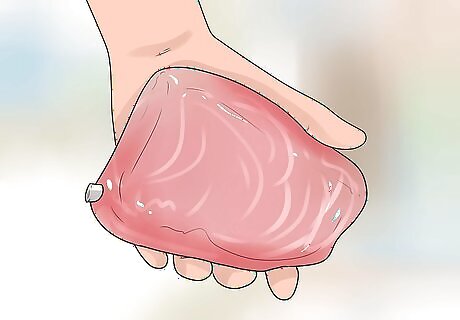
Ease your dog off his fast with bland food. After the fasting period, do NOT put the dog straight back onto his regular diet. Instead, offer him food that is gentle on his stomach and easy to digest. An ideal bland diet avoids fatty foods and rich, red meat. Offer your dog chicken — the actual meat, not than a chicken-flavored food. Don't give your dog chicken skin, only meat. Combine the chicken with boiled white rice, pasta, or mashed potatoes. Avoid milk and dairy products, as many dogs have a lactose intolerance which could trigger diarrhea. This means no butter in the mashed potatoes. Bland food produces a low volume (and pale) stool, so don't expect your dog's feces to look totally normal. What you are looking for is a stool that can be picked up as a sign he is on the mend.
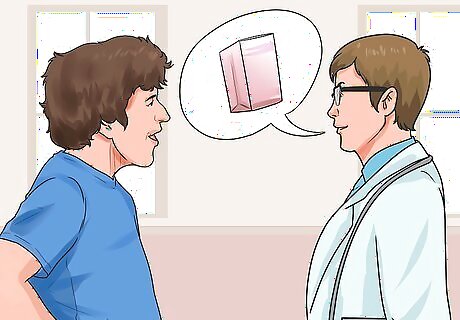
Try a prescription diet from the vet. If you know that your dog doesn't respond well to the bland, home-prepared meal, ask your veterinarian for prescription dog food for healing stomachs. Diets such as Hills ID and Purina EN are proven to speed up the recovery time from diarrhea.
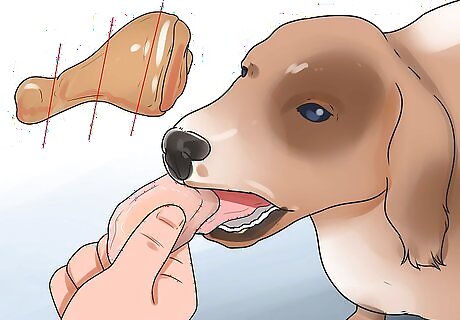
Ration his portion sizes. Smaller meals give the bowel less stimulation to go into spasm. When your dog ends his fast, feed him the same amount of food in a day as his normal diet. However, divide it into four smaller portions and spread the meals throughout the day. This will prevent his diarrhea from returning.
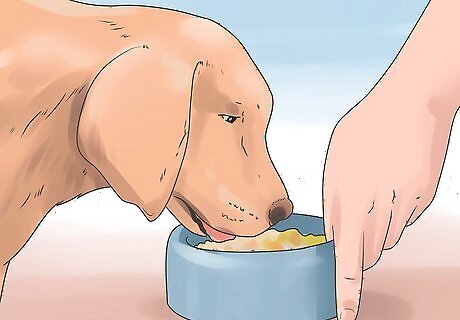
Transition your dog slowly back to a regular diet. Once your dog's diarrhea has safely passed, you can begin easing him back into a normal diet. Don't switch him straight back onto his normal food, as the bowel needs time to heal. Stick to the bland diet for two days to make sure the diarrhea has passed. Then take a further 2 days to transition him back onto normal food using the following method: Mix ⅔ bland food with ⅓ normal diet. The next day, change to ⅓ bland diet and ⅔ normal food. On the third day, it's okay to put him back onto a normal diet.
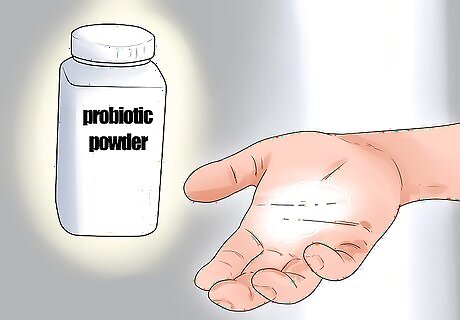
Administer probiotics. Probiotics are bacteria helpful to digestion that speed up recovery from diarrhea. Useful bacteria can be lost during the violent expulsions of diarrhea. It then takes time for the population to build back up again and digestion to reach full efficiency. A supplement of probiotics boosts the bacterial population. Generally, probiotics are mixed into the dog's food once a day, for 5 days. The natural bacteria in a dog's bowel differ from those in human's. Don't give human probiotics to dogs. A variety of canine probiotics are available without prescription from your veterinarian, pharmacist, or major pet stores.
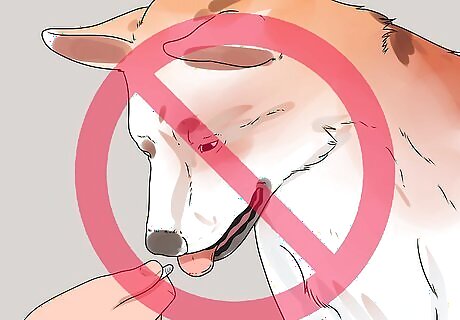
Do not give your dog medications for human diarrhea. Mild diarrhea should respond to the above steps. Giving your dog a drug that reduces bowel movement may hide a serious problem until it is too late. If the original symptoms do not settle after 2 -3 days with the methods mentioned above, chances are your dog has a problem which needs veterinary attention.
Deciding If Your Dog Needs a Vet Visit
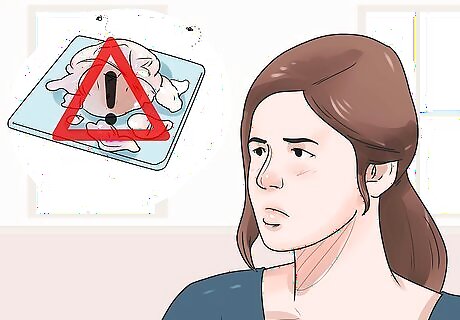
Determine if he's eaten anything dangerous. Diarrhea is usually caused by a dog eating something he shouldn't. In most cases, he'll get better whenever his body eliminates whatever he ate. However, if you find out your dog's consumed something toxic, like rat poison or household cleaning products, then take him to the vet immediately. EXPERT TIP Colleen Demling-Riley, CPDT-KA, CBCC-KA, CDBC Colleen Demling-Riley, CPDT-KA, CBCC-KA, CDBC Canine Behavior Consultant Colleen Demling-Riley (CPDT-KA, CBCC-KA, CDBC) is a Canine Behavior Consultant and the Founder of Pawtopia Dog Training. With more than 20 years of experience, she specializes in creating and customizing dog management programs for dog owners. She is a Certified Pet Dog Trainer-Knowledge Assessed, Certified Behavior Consultant Canine-Knowledge Assessed, Certified Dog Behavior Consultant, and American Kennel Club Canine Good Citizen Evaluator. Colleen is a member of the International Association of Canine Professionals and has been a featured expert in national media including the New York Times, Woman’s Day, Readers Digest, Cosmopolitan, and Yahoo.com. Colleen Demling-Riley, CPDT-KA, CBCC-KA, CDBC Colleen Demling-Riley, CPDT-KA, CBCC-KA, CDBC Canine Behavior Consultant Call the vet for guidance if your dog is in pain. Make your dog comfortable while you attempt to locate the source of their pain. Put them on a soft bed or blankets in a safe and cozy place where they can rest. I recommend choosing a less-busy area of the house, like a crate or bed in the corner of the family room. Don't hesitate to call your vet immediately to find out what you should do.
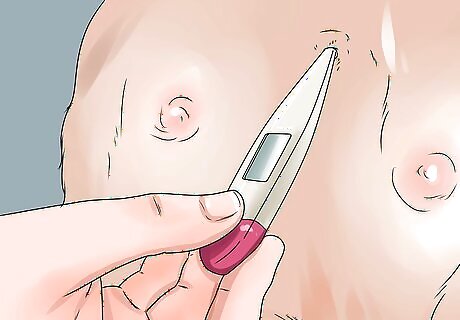
Take his temperature. Simple diarrhea is rarely accompanied by a fever. If your dog's running a fever, he's probably suffering from an infection of some sort. To take your dog's temperature, have a friend restrain him by sliding an arm under his stomach and pulling the dog's hindquarters against his/her chest. The friend should place their other hand firmly under the dog's chin. Gently restrain the dog and speak in soothing tones if it begins to wriggle. Place a muzzle on the dog if you're worried he'll bite during the procedure. Lubricate the thermometer, then, lifting the tail up, insert it gently into the dog's anus. On a female dog, make sure you're not inserting it into the vulva, which is found just below the anus. Do not force the thermometer in, as you can injure your dog. Wait for the thermometer to beep, letting you know it's finished taking its reading. A normal temperature is 100.5 to 102.5 F. Any temperature of 103.5 F or higher is considered feverish.
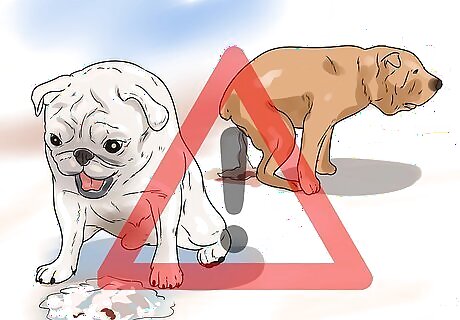
Take note if diarrhea is combined with vomiting. Vomiting and diarrhea is a dangerous combination because the dog is losing fluid at both ends. This puts him at risk of dehydration. This is especially worrying if the dog is unable to drink and hold fluids down. In such a case, seek urgent veterinary attention.
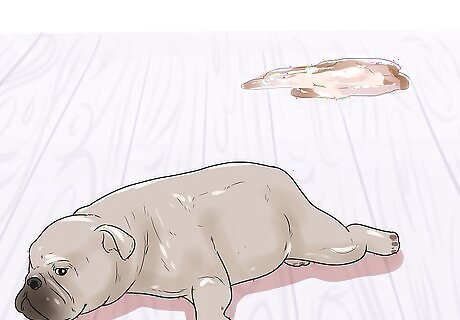
Check for dehydration. Diarrhea is basically feces that contain a large amount of fluid. If the dog passes a lot of diarrhea and doesn't replace that fluid, he will become dehydrated. Dehydration reduces the blood supply to organs such as the liver or kidneys, which can potentially cause damage. To test for dehydration, lift the dog's scruff away from the shoulder blades and then let it go. Fully hydrated skin pings right back into position. The skin of a dehydrated dog is less elastic, and may take a couple of seconds or longer to fall back into place.
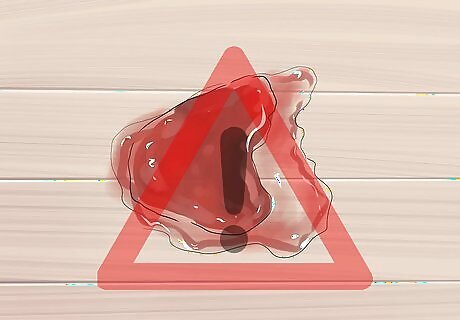
Inspect the diarrhea for blood. If you find blood in the diarrhea, it may be because of inflammation or hemorrhage. While inflammation is uncomfortable, hemorrhage is potentially life-threatening. You won't be able to tell the difference at home so don't take any risks. Seek veterinary attention as soon as you see blood in your dog's stool.
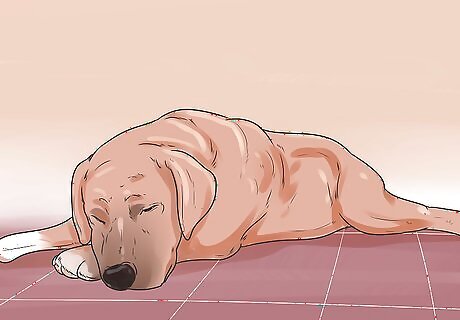
Monitor your dog for weakness, lethargy, or collapse. A dog with mild diarrhea is always bright and alert. If your dog is bright eyed and bouncy, but has diarrhea, monitor him carefully for the development of the signs above. Its okay to try controlling the problem yourself. However, if your dog lacks energy, is listless and unable to settle, or worse - collapses, then seek professional help.




















Comments
0 comment